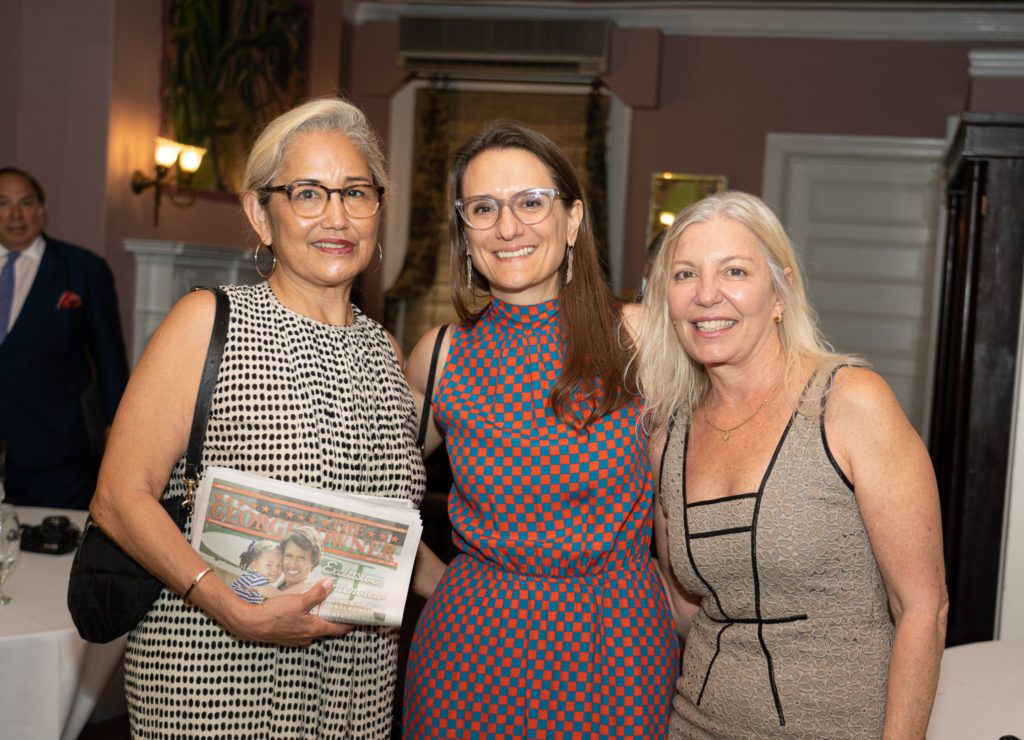Founder Shares Her Capital Fringe Philosophy
By • June 21, 2022 0 2686

When Julianne Brienza was 7, she visited Washington, D.C., with her family. Bored by the monuments, she was mesmerized by a puppet show at the National Zoo.
Some things never change. Brienza — a theater major at Viterbo University in Wisconsin, then an apprentice with Philadelphia’s Arden Theatre Company — went on to launch Capital Fringe in 2005. Among other motivations, she aimed to nurture in stuffy D.C. the informal, all-in-this-together attitude she had found in Philly’s theater community, working with Arden, 1812 Productions, Mum Puppettheatre and, fatefully, FringeArts.
On June 16, as part of The Georgetowner’s Cultural Leadership Breakfast Series at the Tabard Inn, Brienza spoke about her background, her Washington culture shock and the reduced-scale revival, after a two-year hiatus, of the Capital Fringe Festival, to be held July 14 to 17 and July 21 to 24 at Georgetown Park. She also delved into the meaning of “fringe.”
Rooted in unsanctioned performances around the edges of the 1947 Edinburgh Festival, fringe “is supposed to be in opposition to something,” she said. Fringe festivals now take place worldwide, presenting unjuried assortments of short plays, musicals, comedy acts and cabaret shows that provocatively engage with current issues. There are about 30 fringe festivals in the U.S.
Importantly, the performers “get the lion’s share” of the revenue (such as it is, given the affordable pricing). Admission to each Capital Fringe performance is $15, of which the artists get $10.50, she said.
The first year of the Capital Fringe Festival — 2006 — “was basically an explosion,” Brienza recalled. Applications to perform were dropped off on the porch of the house she shared. Support came readily from the DC Commission on the Arts and Humanities and other funders. She and her inaugural team managed to deliver 96 productions at 15 venues.
“Actually, that spirit hasn’t really left us,” she said, noting that the staff remains small and does everything from building out theater spaces to cleaning up after performances.
Though more than a hundred thousand dollars’ worth of equipment and materials was donated for this year’s festival, the cost of renting space had become prohibitive, a problem for all itinerant D.C. theater groups. “So many of the smaller black-box theaters have closed,” Brienza pointed out.
Seeking to animate properties left vacant by the pandemic, the Georgetown Business Improvement District brought her together with the owners of Georgetown Park, the M Street retail complex.
According to Brienza, when they heard the festival was moving to Georgetown, the response of Capital Fringe artists was: “How is anyone gonna get there?” The answer: by bus, Circulator, ride-share, bike and, if applicable, personal car (not to mention on foot).
A resident of Southwest D.C., where the festival was held in recent years, Brienza admitted that Georgetown is “not a place that I go.” But she was clearly upbeat about the festival’s return and the chance to reach a new audience.
The 2022 festival will present 31 productions in six temporary, 51-seat theaters (51 for the District’s push to become the 51st state). Home Rule, 23rd Amendment and Representation are in the former Washington Sports Club and 3 Stars is in the former DSW, all at 3270 M St. NW; W. Washington is in the former Forever 21 at 3222 M St. NW; and “Whatsoever” is reached by crossing the C&O Canal at 33rd Street, looking right and following “the pink flags.”
In many cases, the productions are “people telling their own personal stories,” Brienza said. Several shows are adults-only. Three or four of the performers have never done a show before; 17-year-old Tess Rowan wrote an entire musical called “Static.” A few other titles: “The Oreo Complex,” “Mike Lane: Mixed Race Sweetie,” “Meatballs and Music,” “What They Said About Sex.”
On the two Thursdays and Fridays, the first performances (all of which are 60 to 75 minutes long) begin at 5:15, 5:45 or 6 p.m. On the two Saturdays and Sundays, shows begin at 11:45 a.m. or noon. The full schedule, show descriptions and tickets are available at capitalfringe.org.
During the festival, Sandlot Georgetown, 2715 Pennsylvania Ave. NW, will serve as the “festival bar,” with live music and a community open mic.
To Brienza, who has won Mayor’s Arts Awards under three D.C. mayors, the fringe tradition is about “expanding what theater is.” The live performances at this year’s Capital Fringe Festival, she emphasized, are “a way to discover how we’re feeling in this time of utter chaos and change on the planet.”
For more information on Capital Fringe, see here.

